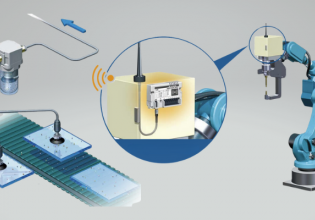Phoenix Contact CAPAROC Circuit Breaker System Now With Modules Approved for Hazardous Locations
Phoenix Contact's CAPAROC electronic circuit breaker system now includes modules fit for hazardous locations, with a Class I, Division 2 rating for North America and triple rating for use across the globe.
Phoenix Contact is well known for its line of electrical components, including everything from switches, safety relays, push buttons, and optocouplers to connectors, cables, and PCB terminal blocks. Recently, Phoenix Contact added to its CAPAROC family with modules fit for use in hazardous locations.

Phoenix Contact CAPAROC electronic circuit break system now available with modules approved for hazardous locations. Image used courtesy of Phoenix Contact
Circuit Breakers In Hazardous Locations
A circuit breaker is a protection device and will open circuits in the event that the downstream devices are drawing too much current or if there is a short circuit to the ground. Breaking the circuit with a full electrical load can cause sparks or arching across the contacts inside the circuit breaker.
Electrical components are typically installed in locations where small arching will not present an issue, but sometimes electrical components are installed in hazardous areas. If a circuit breaker is installed in locations where explosive gas is present and that circuit breaker opens a circuit under full load, the electrical arch produced inside the breaker could cause an explosion.

Class, division, and group are three designations used for classifying hazardous locations. Image used courtesy of Phoenix Contact
Hazardous Location Classification
Anytime electrical devices are going to be used in a location deemed hazardous, they need to be rated for that use. There are three designations for classifying hazardous locations.
Class
The class designator defines the hazardous state of matter or form. Class I is gasses or vapors, Class II is dust, and Class III is fibers and flying material.
Division
The division defines the probability of the hazard igniting or exploding. Division I is a high probability, and Division II is a low probability.
Group
The group defines the hazard in-depth and will list the composition and chemical makeup of the surrounding area. Group A-D is for combustible or flammable gases of various types, and Group E-F contains various combustible dusts and fibers or flying material.
Once the location is classified using the three designators, electrical devices can then be chosen based on their rating to work in the specified hazardous locations. The devices are tested under laboratory hazardous conditions to ensure no catastrophic event will occur.

Modules in the CAPAROC system now available for use in hazardous locations that may have explosive or flammable gasses. Image used courtesy of Phoenix Contact
CAPAROC Modules for Hazardous Locations
Phoenix Contact's award-winning lineup of CAPAROC electronic circuit breakers are slim, overcurrent protection devices designed to work with 12 VDC to 24 VDC and come in 1, 2, and 4 channel options with protection up to 10A per channel.
Phoenix Contact has received approval for certain modules in its CAPAROC family to be used in hazardous locations, including a rating for Class I, Division 2, groups A, B, C, and D for use in North America, triple rating for use worldwide, and approval for use in ATEX and IECEx locations.
The approved circuit breaker modules can now be used in locations that may have explosive or flammable gasses in the area, as the modules have a low probability of causing an explosion or fire.






